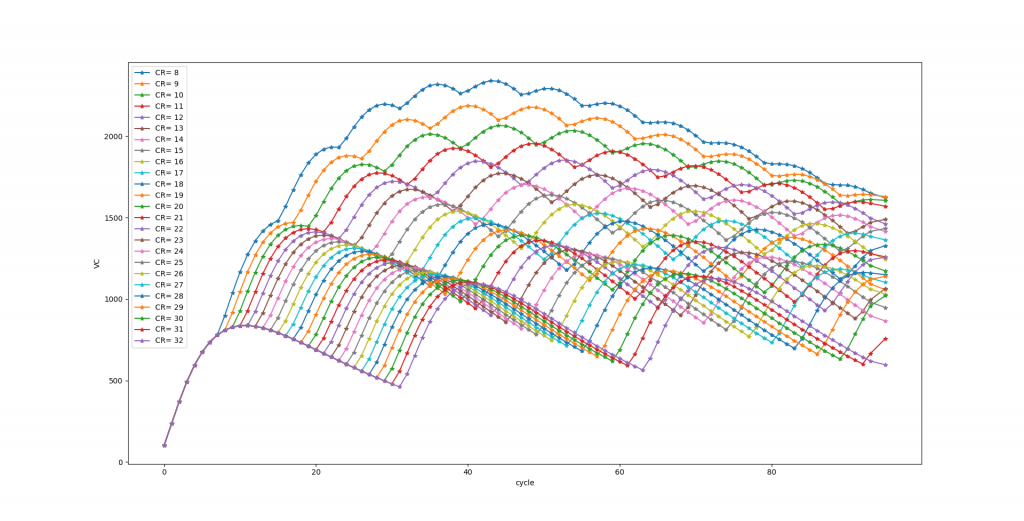2022 has come and gone with little to show for. I’ll try to summarize all problems and progress for the past year:
- Synapse kinetics – as far as I can tell this works as intended, but the model is a crude approximation of the glutamate cycle within the synapse and some parts perhaps should be changed, but it all depends if the approximation is good enough. I don’t have enough information yet to say if it is good enough or not, because other parts of the system are not working well, or not at all.
- LTP/D – the change in AMPA receptors (or any other change) at the synapse level are still not clear to me. I don’t have a theory of what should be accomplished by this change. Literature data is too vague on this and the conditions under which the changes occur are not for sure determined. Experimental data is clear enough but the conditions that lead to changes don’t seem that would happen under normal neuronal conditions, therefore is hard to infer from that data, how is that used for information processing. Is clear to me that a neuron cannot work with multiple frequencies synapses regardless of how LTP/D would work. Is not clear to me if there are multiple frequencies, I envision mechanisms where all frequencies are the same (starting from the amacrine cells) but there is a difference only on the phase of the signal. Is clear to me that LTP/D, regardless of how it works specifically, would change the direct correlation between incoming and outgoing frequencies, meaning a high incoming frequency signal could lead to a low (relative) firing frequency on the postsynaptic neuron, because of a low gain in AMPA receptors..
- Synaptic Connections. I worked under the premise: “neurons that fire together, wire together” and I implemented 6 different mechanisms (st of rules) for connecting 2 neurons. However in the end there are detailed that make the whole concept uncertain. I have assumed that a neurons when activates will send a signal in its proximity promoting axonal growth from close by neurons which will lead to forming a connection. The problem here comes from the following unknowns: – how far is that signal spreading ? How fast ? How much does it last ? I have assigned equal “probabilities” to form a connection based on distance but this approach leads to a problem o symmetry, too many neurons would become identical and will fail to separate incoming signals. Ignoring the unknowns there is an additional fundamental problem. There is a mechanism that leads to breaking a synapse, that mechanisms seems to supersede the mechanism of forming a synapse. So the mechanism of forming a synapse could be totally random and will still work because the control comes from the synapse breaking mechanism. Yet having equal binding probabilities should have worked too, but it doesn’t because of symmetry, so there still have to be some rules for forming a new connection but I failed to find anything convincing.
- Inhibitory neurons – I believe they are a must, but there are also too many unknowns: should they completely stop a neuron from firing or just modify the firing frequency ?? Both mechanisms seem reasonable but I cannot form any theory of how should they work because of unknown details: do they have same activation potential ? do they have same repolarization time ? Can the repolarization time change as a hard to reverse change ? Since they are otherwise regular neurons I still have to deal with all the other problems LTP/D, synapse connection/breaking. I have also to understand how much to inhibit the other neurons, is the level of inhibition a fixed values ? Can it change, be increased or decreased.
- Feedback mechanism – I have implemented a way of changing the behavior of a synapse when a feed-back signal is present, but I have no idea of why I should feedback a negative or positive signal… When or why should I change a synapse through feedback ? I have thought of an abstract reason, just declare a neuron good and one bad and if the signal reaches either an appropriate signal should be sent back.. But because of all the other problems I could never test this hypothesis.
What are the predictions for 2023 ? Considering all the unknowns, I don’t believe I will make significant progress in 2023.. All 5 bullet points should work “correctly” otherwise nothing will work… There are many many combination among the 5 and no working theory, so trial and error it is… That takes a lot of time and my motivation is not good either, discovering 10 000 ways of failing may seem fun at the beginning but after a while it takes a toll on you..

